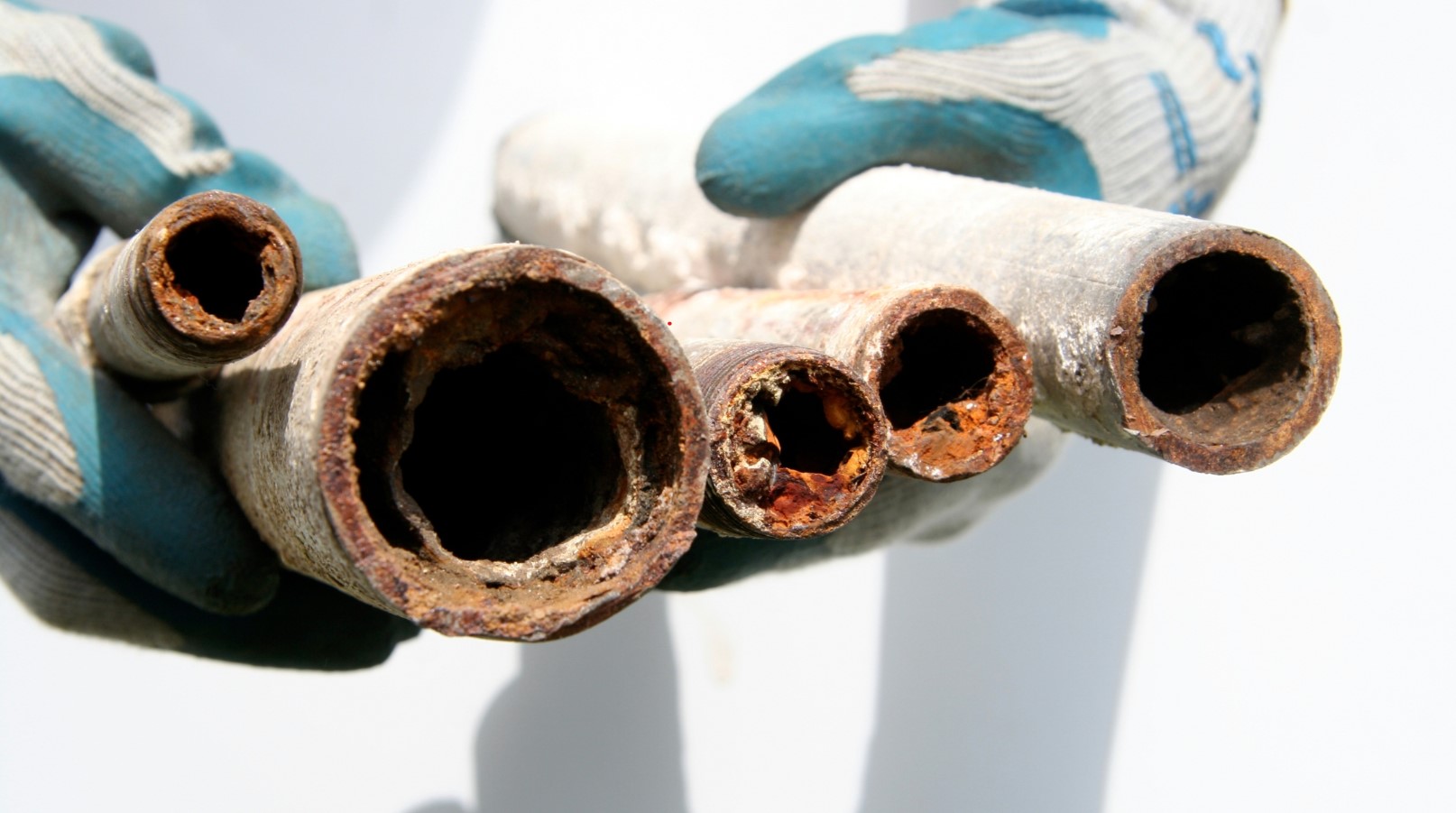Older homes have a unique charm, but they also come with aging infrastructure, including residential plumbing systems that may be outdated or hazardous. Many of these homes were built with materials that are now known to corrode, leak, or even contaminate drinking water. The EPA states that even low levels of lead exposure can impair cognitive development in children and lead to other long-term health issues.
Understanding these risks can help homeowners take proactive steps to maintain their systems and prevent costly plumbing repairs.
Here are ten prevalent plumbing problems, their causes, and step-by-step solutions.
Table of Contents
Key Takeaways✔ Lead, galvanized steel, and polybutylene pipes deteriorate over time, leading to leaks, rust buildup, and potential water contamination. Replacing them with modern materials ensures safety and efficiency. ✔ As pipes weaken, small leaks develop and escalate into major water damage, mold growth, and increased water bills. Early detection and targeted repairs are crucial. ✔ Years of grease, soap scum, and debris accumulation slow drainage, often requiring drain screens, enzymatic cleaners, or professional hydro jetting. ✔ Clay and cast iron sewer pipes crack over time, allowing tree roots to invade and cause blockages. A sewer camera inspection and hydro jetting help diagnose and clear obstructions. ✔ Leaky faucets, running toilets, and outdated plumbing fixtures increase utility bills and water waste, making low-flow replacements a practical upgrade. ✔ Sediment buildup, worn-out heating elements, and outdated insulation reduce performance, requiring annual maintenance or replacement with energy-efficient models. ✔ Corroded or jammed shut-off valves fail in emergencies, emphasizing the need for routine testing and upgrading to quarter-turn ball valves. ✔ Older homes often lack proper drain venting, causing gurgling pipes, slow drainage, and sewer gas odors, which can be fixed with additional vent pipes or air admittance valves. ✔ Some older homes still have lead-based plumbing fixtures, which should be replaced immediately to prevent lead contamination in drinking water. |
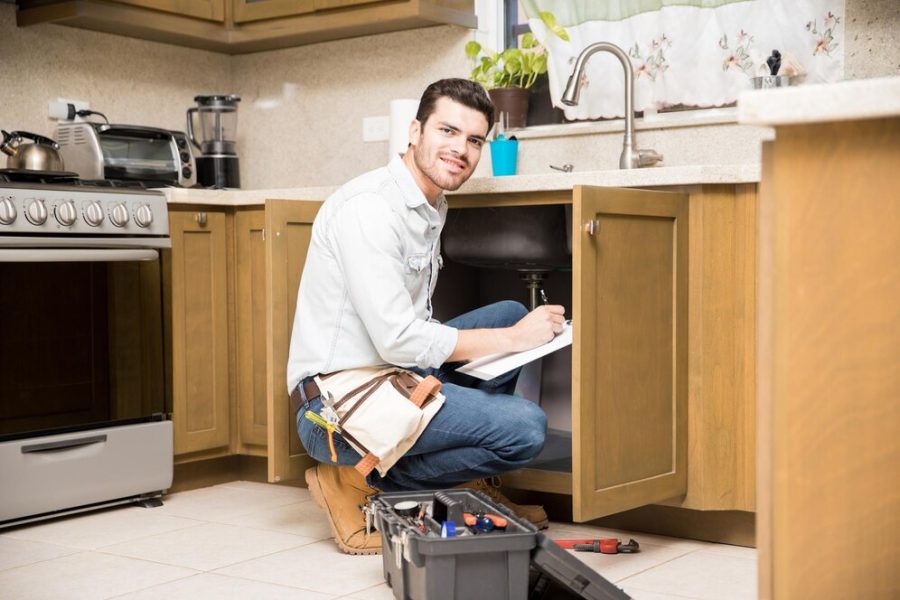
Plumbing Systems in Older Homes
Older homes have plumbing systems that differ greatly from those found in modern residences. Many homes built before the 1970s contain outdated materials and improper venting that contribute to inefficiencies. Knowing what to look for can help prevent major plumbing failures.
Common Plumbing Materials Used in the Past
The type of pipes used in older homes directly affects their longevity and performance. Over time, advancements in plumbing materials have led to safer and more efficient alternatives. The most common materials found in older homes include:
- Lead Pipes: Often found in homes built before the 1950s, lead pipes pose severe health risks due to lead contamination in drinking water. The Environmental Protection Agency (EPA) recommends replacing them entirely. Even minimal exposure to lead in drinking water can contribute to serious neurological and developmental issues, making replacement an urgent priority.
- Galvanized Steel Pipes: Popular in the mid-20th century, these pipes corrode over time, leading to rust buildup, restricted water flow, and leaks. The interior of galvanized pipes can become rough and uneven due to corrosion, further accelerating the accumulation of sediment and reducing water efficiency.
- Cast Iron Pipes: Frequently used for sewer lines, cast iron is durable but can crack and rust over time, leading to drainage issues and possible sewer backups. While cast iron pipes are strong, they are highly susceptible to internal corrosion, which can result in hidden leaks and eventual pipe failure.
- Polybutylene Pipes: Installed between the 1970s and 1990s, polybutylene pipes were once a cost-effective option but are now known for becoming brittle and prone to breaking. Chlorine and other water treatment chemicals accelerate the breakdown of polybutylene, increasing the risk of sudden pipe bursts and costly water damage.
Why Old Plumbing Systems Fail
Older plumbing systems deteriorate due to a variety of factors, often leading to leaks, inefficiencies, and costly plumbing repairs. While some aging plumbing issues can be managed with maintenance, others require complete replacement to ensure safety and functionality.
- Corrosion: Metal pipes naturally degrade over time, leading to leaks and reduced water quality. The presence of oxygen and moisture speeds up corrosion, particularly in humid or coastal environments where pipes are exposed to high levels of atmospheric moisture.
- Sediment Buildup: Minerals from hard water can accumulate inside pipes, restricting water flow and increasing the likelihood of blockages. Over time, this buildup can also damage water heaters and appliances, reducing their efficiency and lifespan.
- Outdated Installation Practices: Many plumbing methods used in older homes do not meet modern standards, making them more susceptible to failure. In some cases, outdated systems may not have proper venting, shut-off valves, or drainage slopes, leading to inefficiencies and frequent plumbing issues.
10 Common Plumbing Problems in Older Homes and How to Fix Them
1. Outdated Pipe Materials and Their Risks
Older homes frequently contain plumbing materials that are now known to cause significant issues. Lead, galvanized steel, and polybutylene pipes were once common but are now considered problematic due to their tendency to degrade, rust, or even contaminate drinking water.
According to the Environmental Protection Agency (EPA), there are approximately 9.2 million lead service lines in the United States that need replacement. This highlights the widespread issue of lead contamination in older plumbing systems. These outdated materials contribute to:
- Frequent leaks: Galvanized steel and polybutylene pipes tend to corrode over time, leading to small leaks that can escalate into major water damage.
- Reduced water pressure: Rust buildup in galvanized pipes restricts water flow, leading to weak showers and slow-running faucets.
- Health risks: Lead pipes pose a serious health risk, as lead can leach into drinking water, causing long-term neurological and developmental problems, especially in children.
How to Fix This Issue
- A professional residential plumbing inspection should be conducted to assess the condition of existing pipes.
- Lead pipes should be replaced immediately with PEX or copper to ensure water safety.
- If galvanized steel pipes are present, repiping with PVC, PEX, or copper improves water quality and pressure.
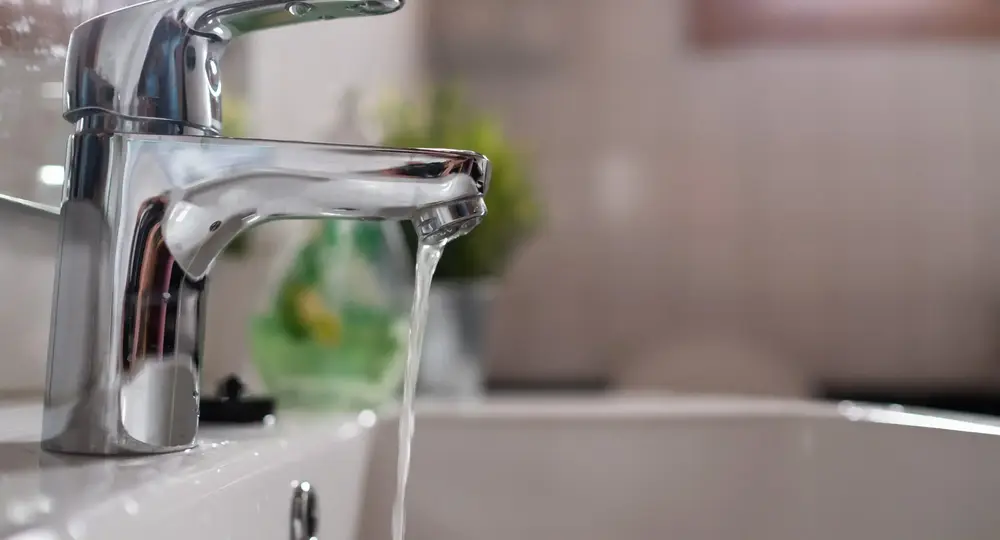
2. Low Water Pressure
Low water pressure is a common frustration in older homes, often caused by:
- Mineral deposits: Hard water minerals accumulate in pipes over time, narrowing passageways and restricting water flow.
- Aging pipes: Corroded interior pipe surfaces reduce the space for water to move through, significantly lowering pressure.
- Partially closed or failing shut-off valves: Sometimes, water pressure issues stem from shut-off valves that are not fully open or have become stuck due to corrosion.
How to Fix This Issue
- Aerators on faucets and showerheads should be cleaned regularly to remove mineral buildup.
- Pipes with extensive buildup or corrosion should be flushed professionally or replaced if necessary.
- If water pressure issues persist, testing the main water supply line for blockages may be required.
3. Frequent Pipe Leaks
As homes age, pipes weaken and develop leaks, which can lead to costly plumbing repairs if not addressed promptly. Signs of leaks include:
- Water stains on ceilings and walls: Often a sign of slow, hidden leaks.
- Mold growth and musty odors: Persistent moisture from leaks creates the perfect environment for mold and mildew.
- Unexplained spikes in water bills: A sudden increase in water usage may indicate a leak somewhere in the system.
How to Fix This Issue
- Regularly inspect visible pipes, especially in basements, crawl spaces, and under sinks.
- Small leaks should be patched with epoxy or plumber’s tape temporarily until a professional can assess the issue.
- If leaks are widespread, repiping the affected sections or the entire home may be the best long-term solution.
4. Clogged or Slow Drains
Drain blockages occur more frequently in older homes due to decades of buildup inside pipes. Common causes include:
- Grease and food waste: Kitchen sinks accumulate oil, grease, and food debris, leading to stubborn clogs.
- Hair and soap scum: Bathroom drains often clog due to hair, soap residue, and other debris.
- Tree roots: Older sewer lines, especially clay pipes, are susceptible to tree root intrusion, which can cause complete blockages.
How to Fix This Issue
- Installing drain screens helps prevent hair and debris from entering the pipes.
- Avoid using chemical drain cleaners, which can damage old plumbing. Instead, opt for enzymatic cleaners or a professional hydrojetting service.
- If tree root intrusion is suspected, a plumber can conduct a camera inspection and remove the blockage with hydrojetting or pipe relining.
5. Sewer Line Issues and Tree Root Intrusion
Sewer line problems in older homes are often caused by:
- Aging materials: Cast iron and clay sewer pipes deteriorate over time, leading to cracks and leaks.
- Tree roots: Roots seek out water sources and can grow into small cracks in sewer lines, eventually causing major blockages.
- Ground shifting: Over time, the ground around a home settles, potentially misaligning or breaking underground sewer pipes.
How to Fix This Issue
- Conducting a sewer camera inspection identifies the severity of the problem.
- Hydro jetting removes minor root intrusions, but if the pipe is heavily damaged, replacing it with modern PVC is recommended.
- If sewer backups are frequent, installing a root barrier around the sewer line can help prevent future growth into pipes.
6. Aging Fixtures and Inefficient Toilets
Outdated plumbing fixtures not only waste water but can also cause residential plumbing inefficiencies. Common signs include:
- Constantly running toilets: Worn-out flappers and faulty fill valves result in constant water flow, leading to high water bills.
- Leaky faucets: Small drips add up, wasting hundreds of gallons of water annually.
- Outdated toilets: Older models use significantly more water per flush than modern low-flow toilets.
How to Fix This Issue
- Replacing old fixtures with water-efficient models saves water and reduces bills.
- Worn-out washers, seals, and flappers should be replaced to stop leaks.
- Low-flow toilets and faucet aerators can be installed to reduce water consumption.
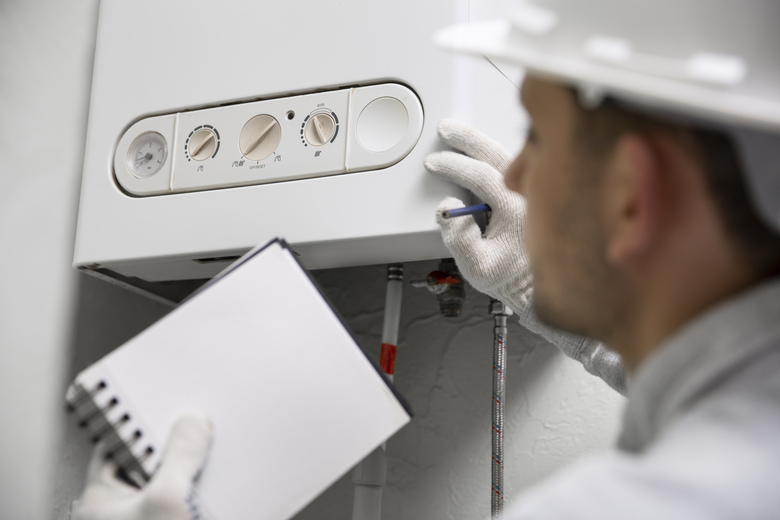
7. Water Heater Inefficiencies
Older water heaters become inefficient due to:
- Sediment buildup: Minerals from hard water settle at the bottom of the tank, reducing heating efficiency.
- Worn-out heating elements: In electric models, heating elements degrade over time, making water heating less effective.
- Inefficient insulation: Older water heaters may lack proper insulation, leading to heat loss and higher energy costs.
How to Fix This Issue
- Flushing the water heater annually removes sediment buildup.
- If heating elements are failing, they should be replaced rather than repairing an old unit.
- Upgrading to an energy-efficient tankless water heater ensures continuous hot water and reduces energy consumption.
8. Outdated or Faulty Shut-Off Valves
Aging shut-off valves may become corroded, making them difficult to operate in an emergency. Here are some common causes of outdated or faulty shut-off valves:
- Mineral buildup: Hard water deposits like calcium and lime can clog valves, causing leaks or blockages.
- Worn seals and gaskets: Deteriorated seals may prevent proper sealing, leading to leaks.
- Old or inferior materials: Weak plastic or low-quality metal valves in older homes can crack, warp, or fail.
How to Fix This Issue
- Homeowners should test shut-off valves periodically to ensure they function properly.
- If valves are difficult to turn or stuck, they should be replaced with modern quarter-turn ball valves, which are more reliable and easier to use.
9. Poor Drain Venting and Gurgling Pipes
Improper venting in older homes can lead to:
- Slow drainage: Without adequate venting, air cannot escape properly, slowing down water flow.
- Gurgling sounds: Air trapped in pipes causes bubbling noises when water drains.
- Sewer gas odors: Improper venting can lead to unpleasant smells inside the home.
How to Fix This Issue
- Installing additional vent pipes can improve drainage performance.
- Air admittance valves (AAVs) provide an alternative solution when adding full vent pipes isn’t feasible.
10. Lead or Inefficient Plumbing Fixtures
Older homes may still have lead-based plumbing fixtures, which can leach toxic metals into drinking water.
How to Fix This Issue
- Lead-based fixtures should be replaced with lead-free alternatives.
- Faucets and showerheads with WaterSense certification improve efficiency while maintaining water pressure.
How to Choose a Professional Plumber for Older Home Repairs
Older homes come with unique residential plumbing challenges that require a specialized approach. Choosing the right professional in Torrington, CT, can prevent unnecessary damage, and costly mistakes, and ensure compliance with modern plumbing codes.
Why Hire a Specialist?
While any licensed plumber can perform basic plumbing repairs, older homes require a professional with in-depth experience in historical plumbing systems. A plumber unfamiliar with older construction methods may inadvertently cause further damage by using incorrect materials or techniques.
- Understanding of Outdated Materials and Their Risks: Lead, galvanized steel, and cast iron pipes were commonly used in older homes, but they are now known to corrode, rust, and pose health hazards. A specialist can accurately assess whether these materials need replacement or repair.
- Knowledge of Local Building Codes and Regulations: Plumbing codes have evolved over the years, and some older plumbing setups no longer comply with safety and efficiency standards. A specialist ensures all work meets current legal requirements.
- Minimizing Damage During Repairs: Many older homes feature fragile plaster walls, antique fixtures, and vintage tiling that can be damaged during plumbing work. A specialist knows how to access plumbing lines with minimal disruption to these historical elements.
- Custom Solutions for Unique Challenges: Some older homes have plumbing systems that do not follow modern layouts. Instead of tearing out walls or floors, an experienced plumber can devise alternative methods for rerouting or upgrading pipes without excessive demolition.
Questions to Ask Before Hiring a Plumber
Homeowners should ask targeted questions to ensure the professional they hire is equipped to handle the complexities of residential plumbing in historical homes.
1. Do you have experience with older homes?
Not all plumbers are familiar with the unique challenges of historic plumbing systems. Asking about past projects involving older homes can help determine whether they have the necessary expertise.
2. What materials do you recommend for repiping?
Replacing outdated pipes is a significant investment. A knowledgeable plumber should be able to explain the best modern materials (PEX, copper, PVC) and why they are suitable for the home’s specific needs.
3. How do you ensure minimal disruption to the home’s original structure?
A skilled plumber should have a strategy for preserving vintage fixtures, avoiding unnecessary demolition, and maintaining the home’s aesthetic while performing repairs or upgrades.
4. Are you familiar with local regulations regarding historical home plumbing?
Some municipalities have specific rules for updating the plumbing in designated historical properties. A plumber with local experience will ensure all work meets these requirements.
5. Do you offer a warranty on your work?
Plumbing repairs in older homes can be complex. A reputable plumber should stand behind their work with a warranty, ensuring that any unexpected issues are addressed.
Frequently Asked Questions
What should I do if my pipes freeze during cold weather?
If your pipes freeze, immediately turn off the main water supply to prevent bursting. Use a hair dryer, space heater, or warm towels to slowly thaw the pipes—never use an open flame. Once thawed, check for leaks and consult a professional plumber if necessary.
How can I prevent water damage in my home?
Regularly inspect plumbing systems for leaks, especially under sinks, around appliances, and near water heaters. Install water sensors in vulnerable areas to detect leaks early and prevent costly damage. Address even minor drips or moisture buildup quickly to avoid structural issues and mold growth.
Is it safe to use chemical drain cleaners for clogs?
Chemical drain cleaners can be effective but may corrode older pipes over time, leading to more serious plumbing issues. Instead, use a plunger or drain snake to remove clogs safely without damaging the pipes. If blockages persist, professional hydrojetting or plumbing repairs may be necessary.
What items should never be flushed down the toilet?
Avoid flushing anything other than human waste and toilet paper, as other materials can clog pipes and damage the plumbing system. Items like “flushable” wipes, feminine hygiene products, paper towels, and cat litter do not break down properly in sewer systems. Regularly inspect toilet function to ensure proper drainage and prevent backups.
How often should I have my plumbing system inspected?
A professional plumbing inspection should be done at least once a year to identify leaks, corrosion, and potential failures. Routine maintenance helps extend the lifespan of pipes, water heaters, and fixtures, reducing the risk of emergency plumbing repairs. Homeowners with older homes should schedule inspections more frequently due to the increased risk of aging plumbing systems.
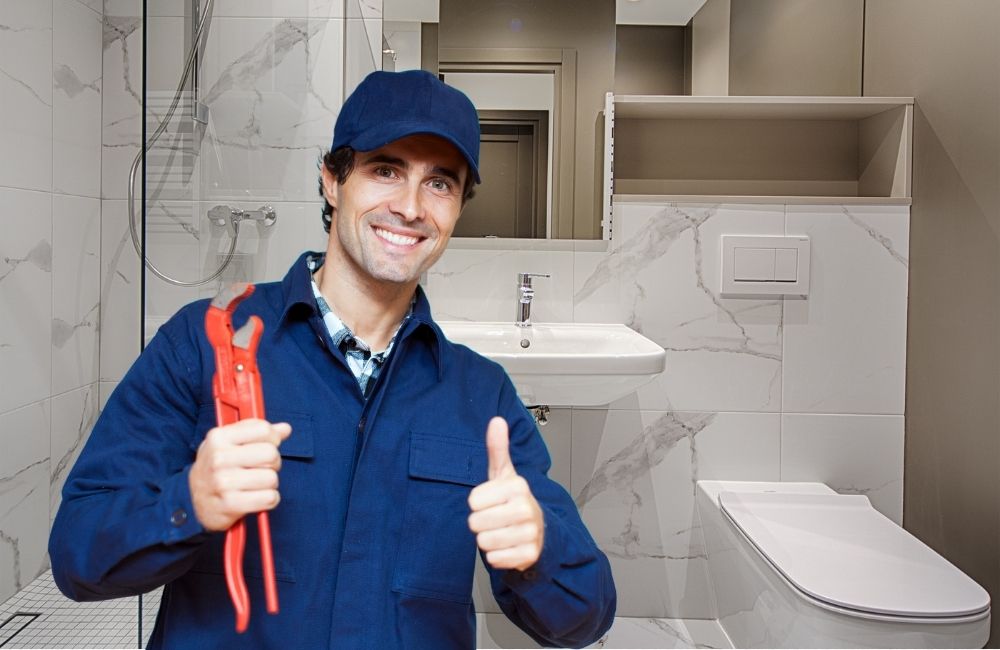
Get Expert Plumbing Repairs for Your Older Home in Torrington, CT!
Maintaining the plumbing system in an older home requires professional expertise to prevent costly damage and ensure efficiency. If you’re facing issues like leaks, low water pressure, or outdated pipes, L&P Plumbing is the trusted choice for residential plumbing services in Torrington, CT. Our experienced team specializes in repairing and upgrading aging plumbing systems while preserving the integrity of your home.
Contact L&P Plumbing today for expert residential plumbing services in Torrington, CT!

